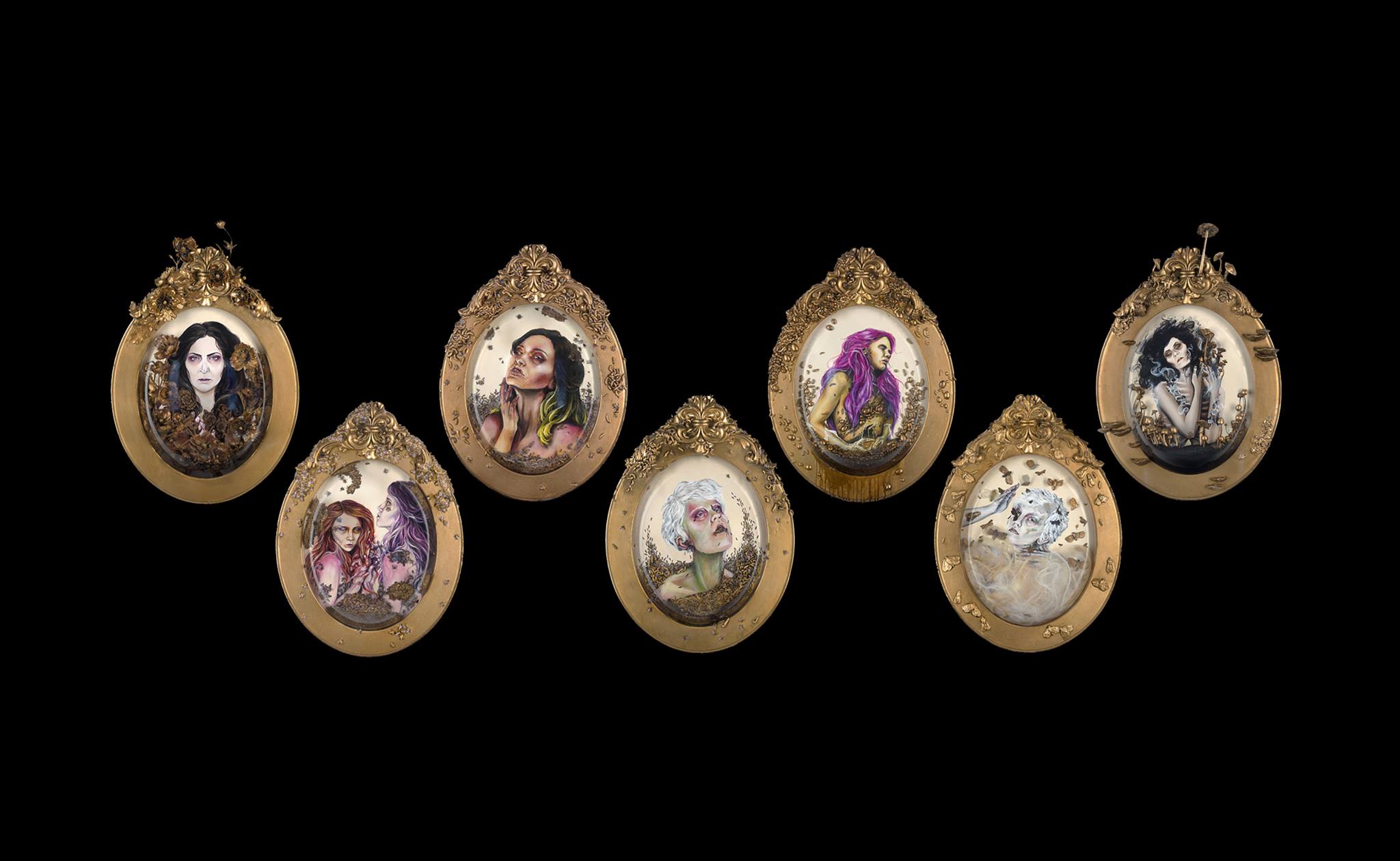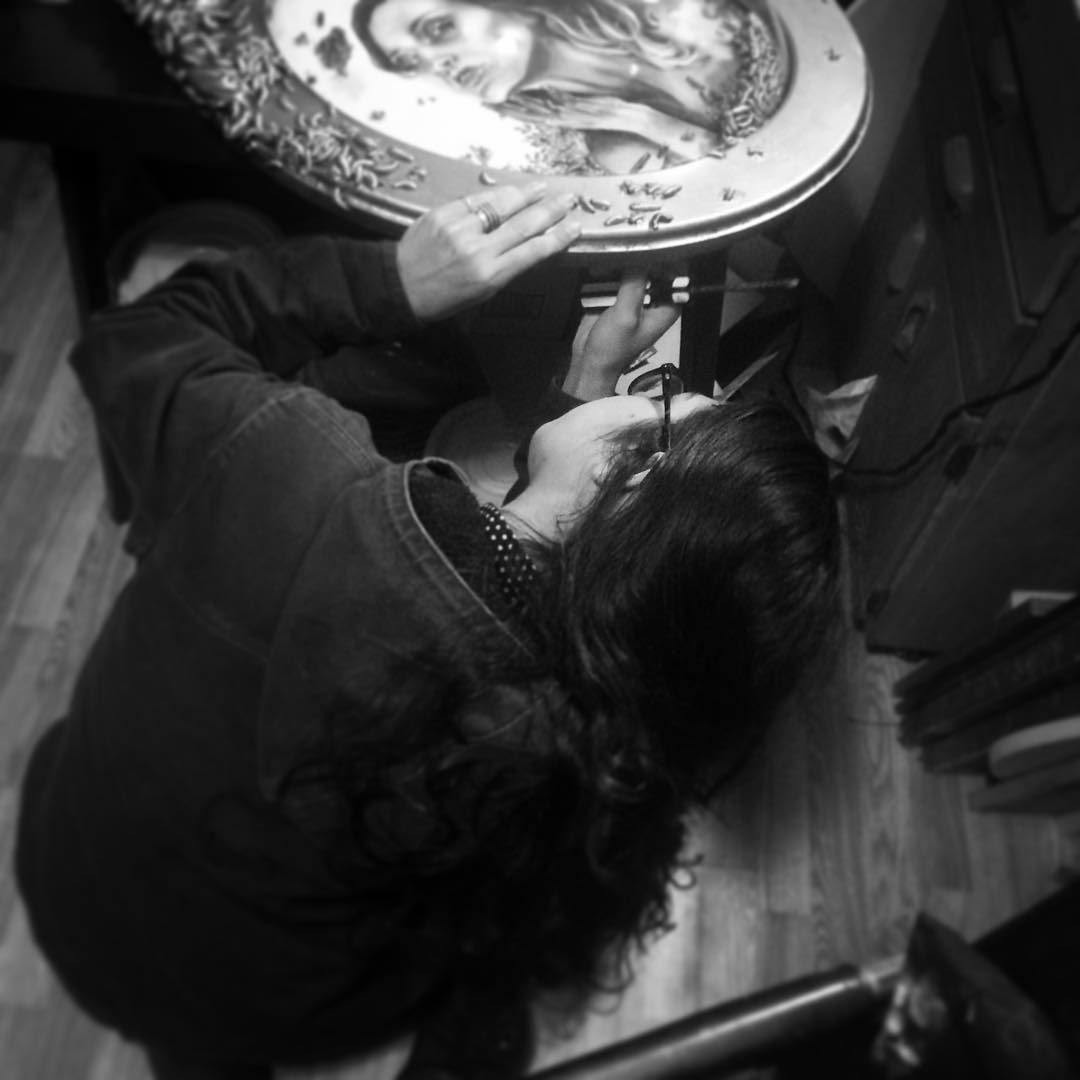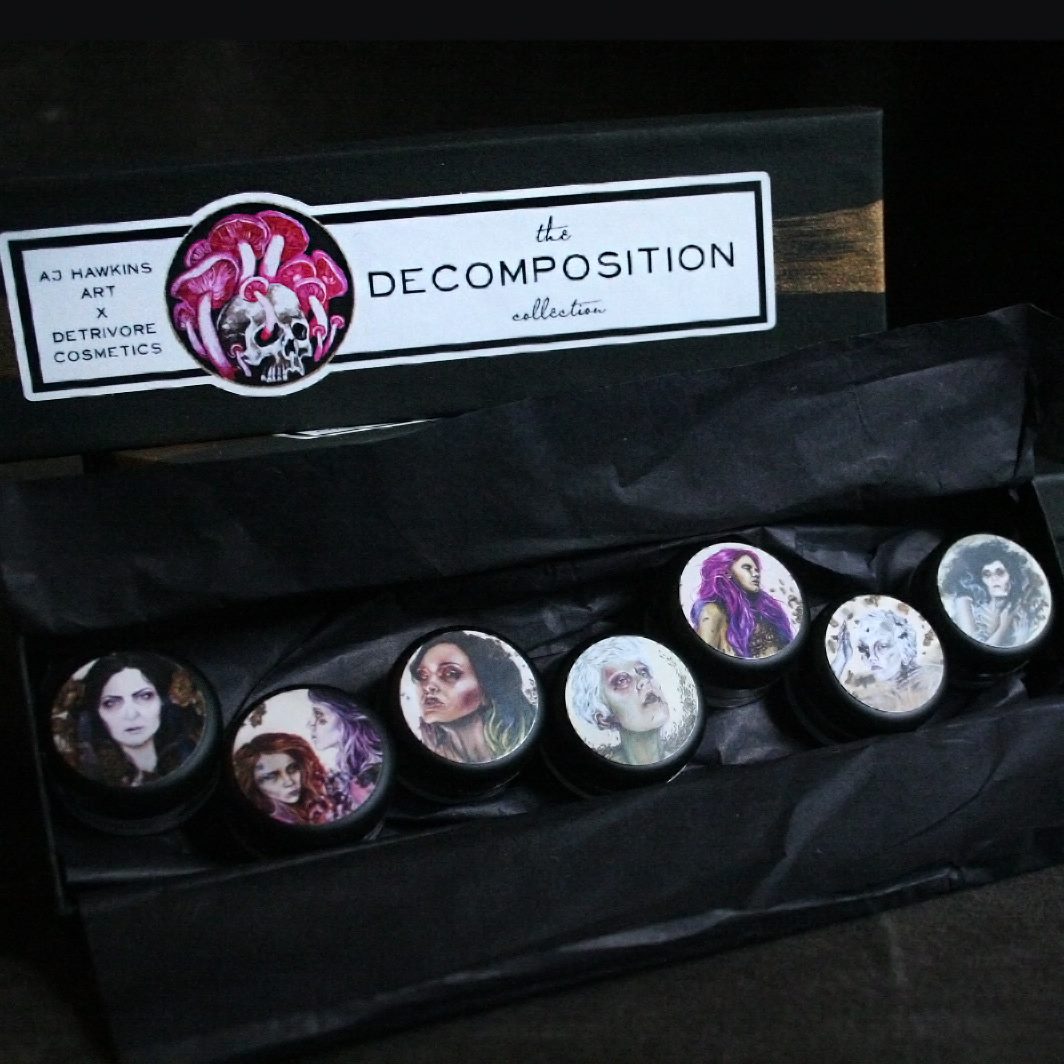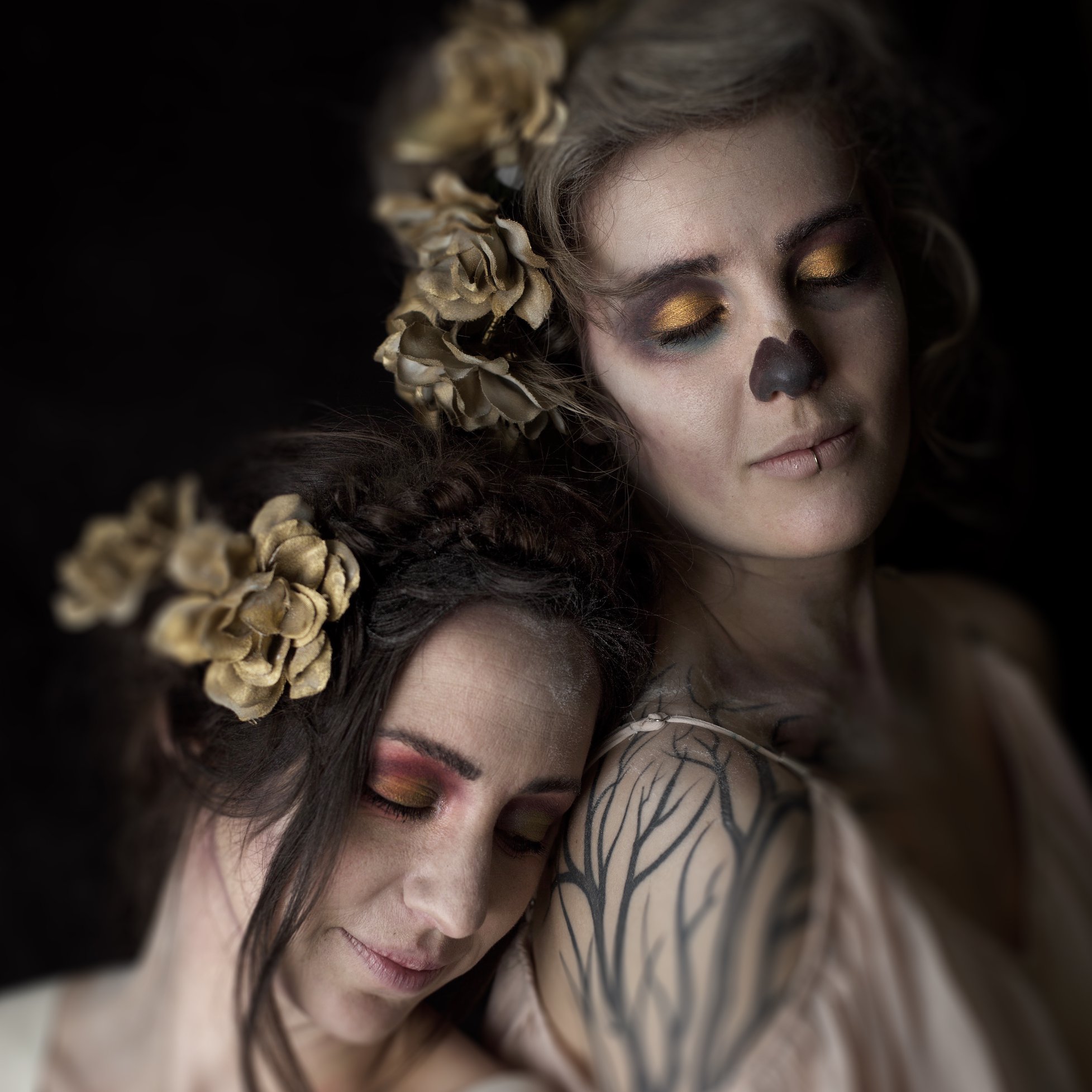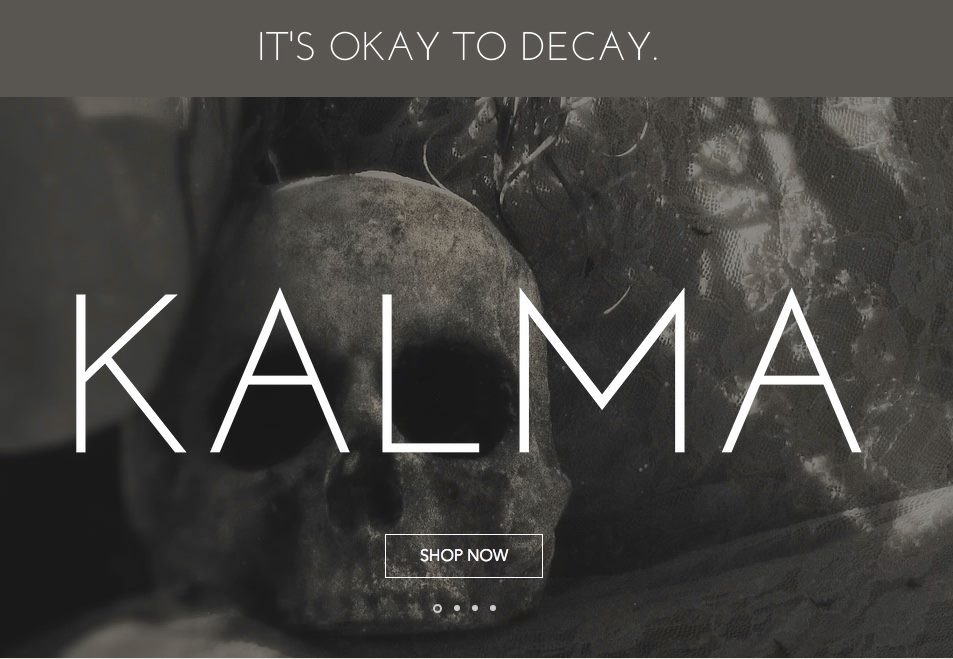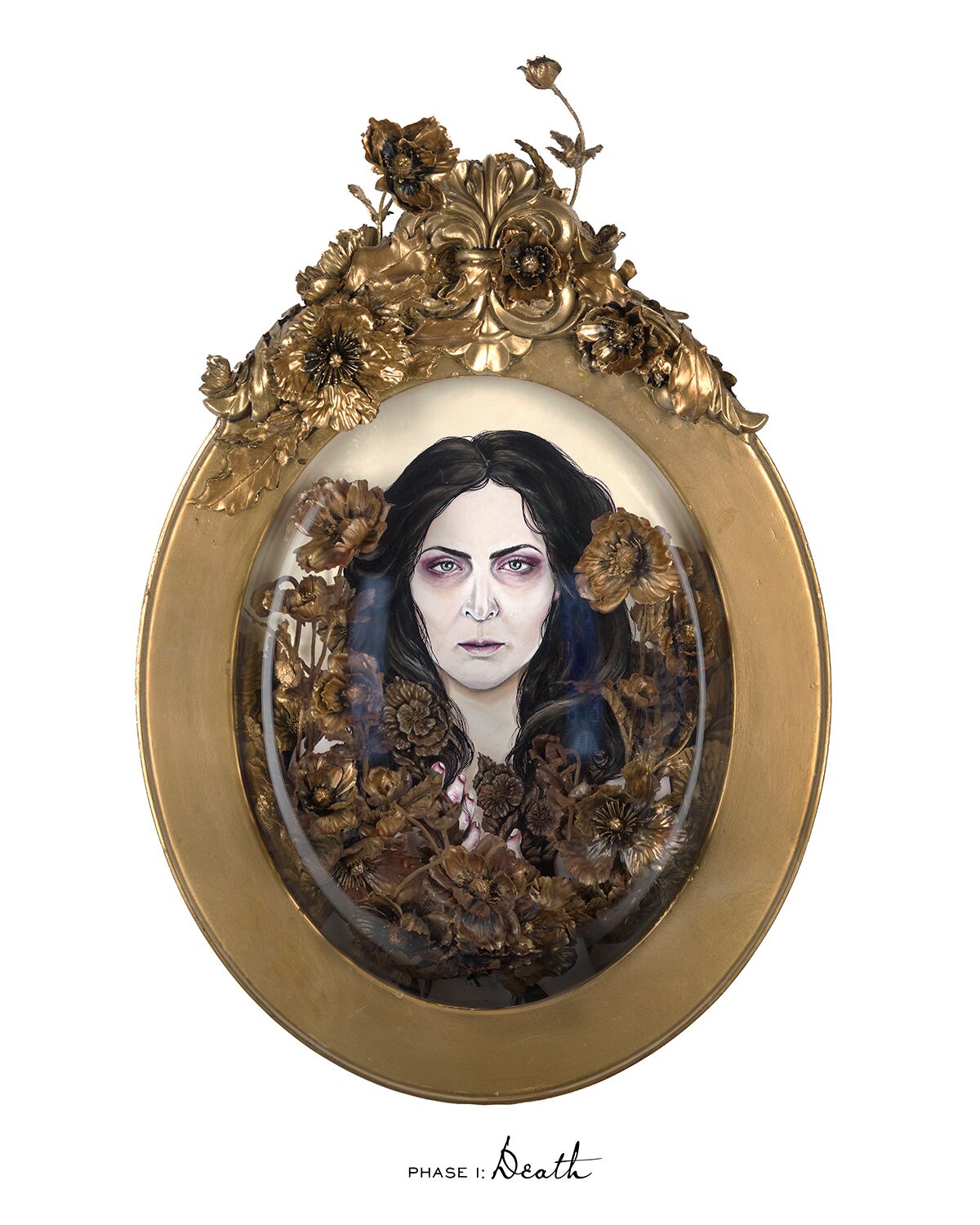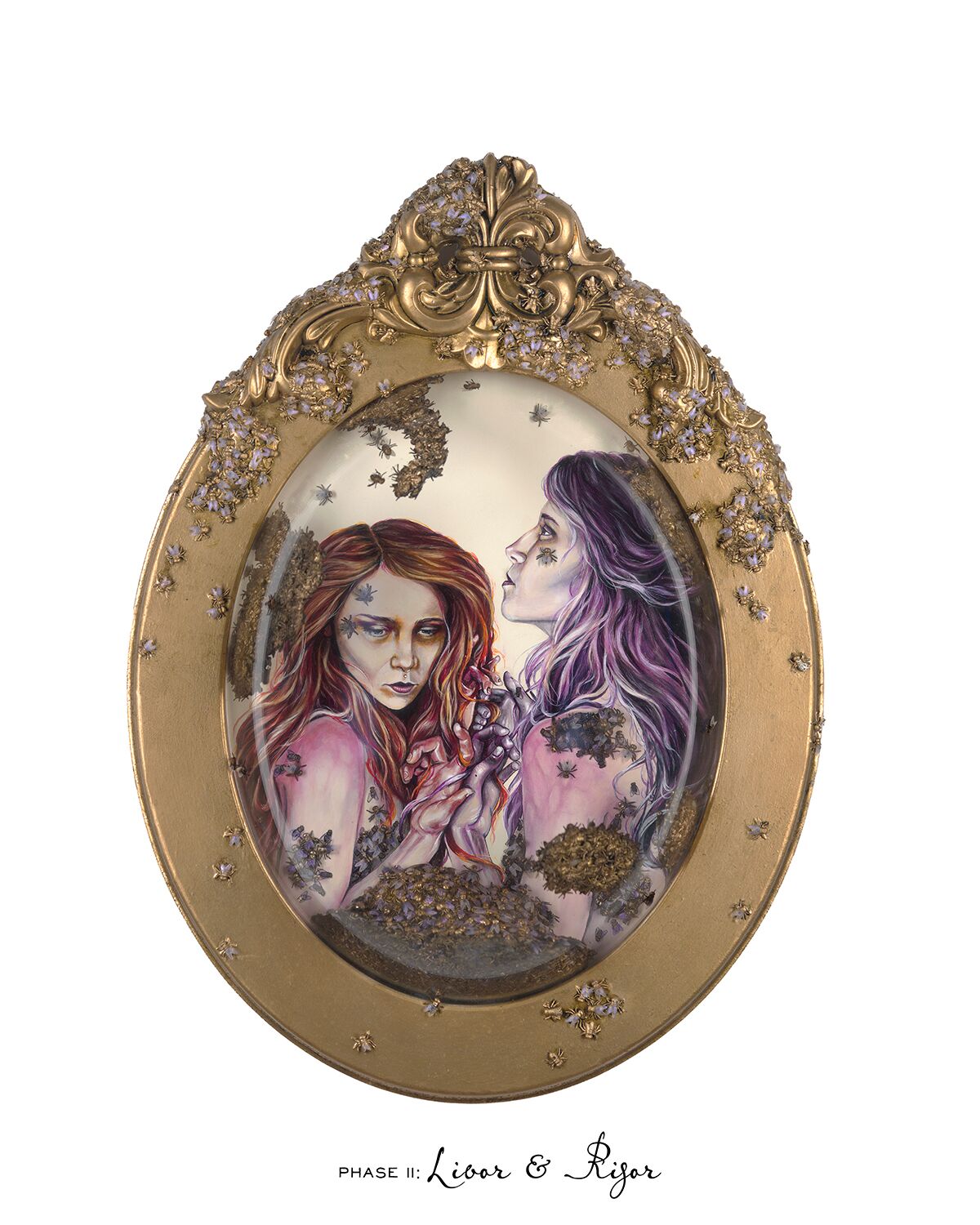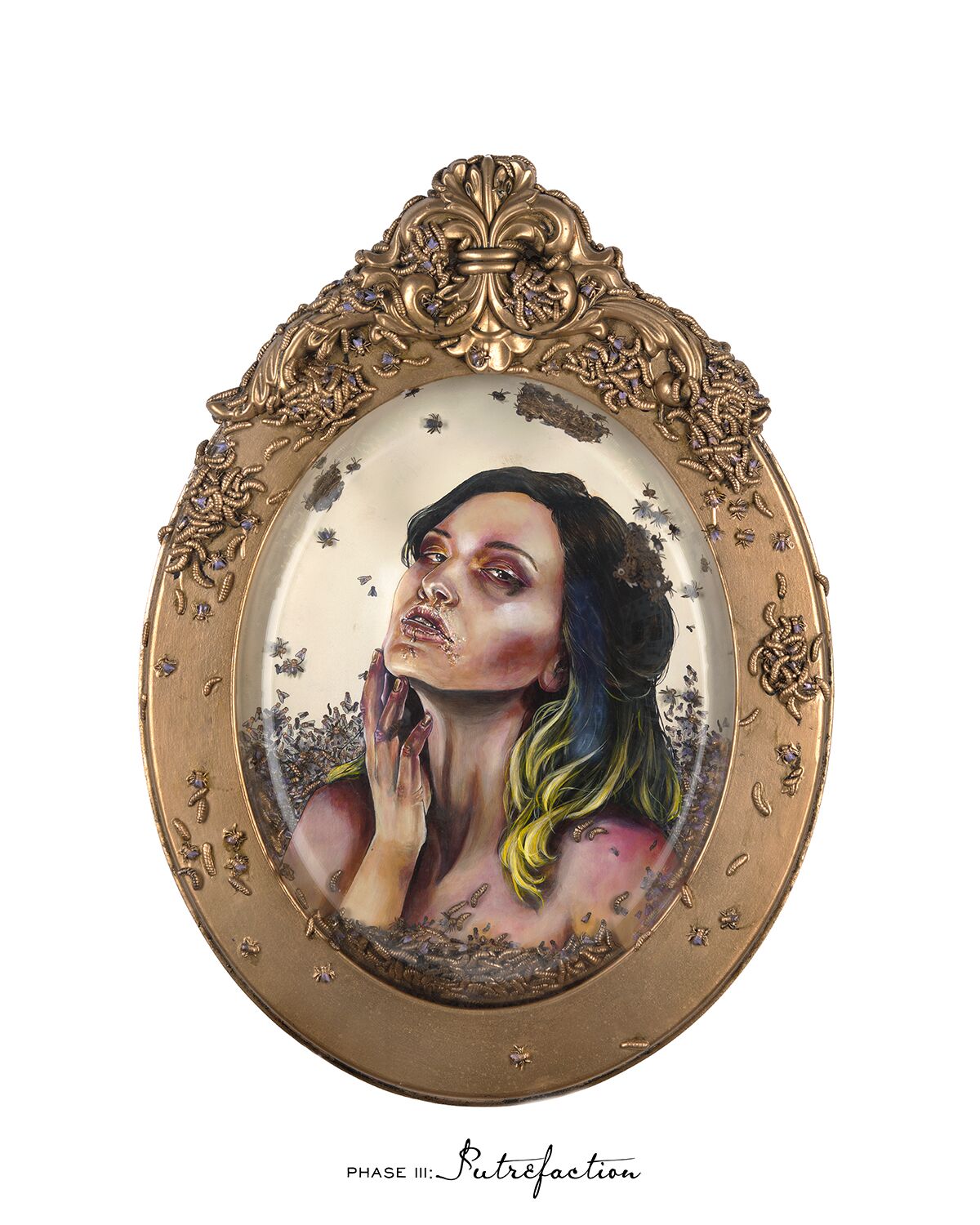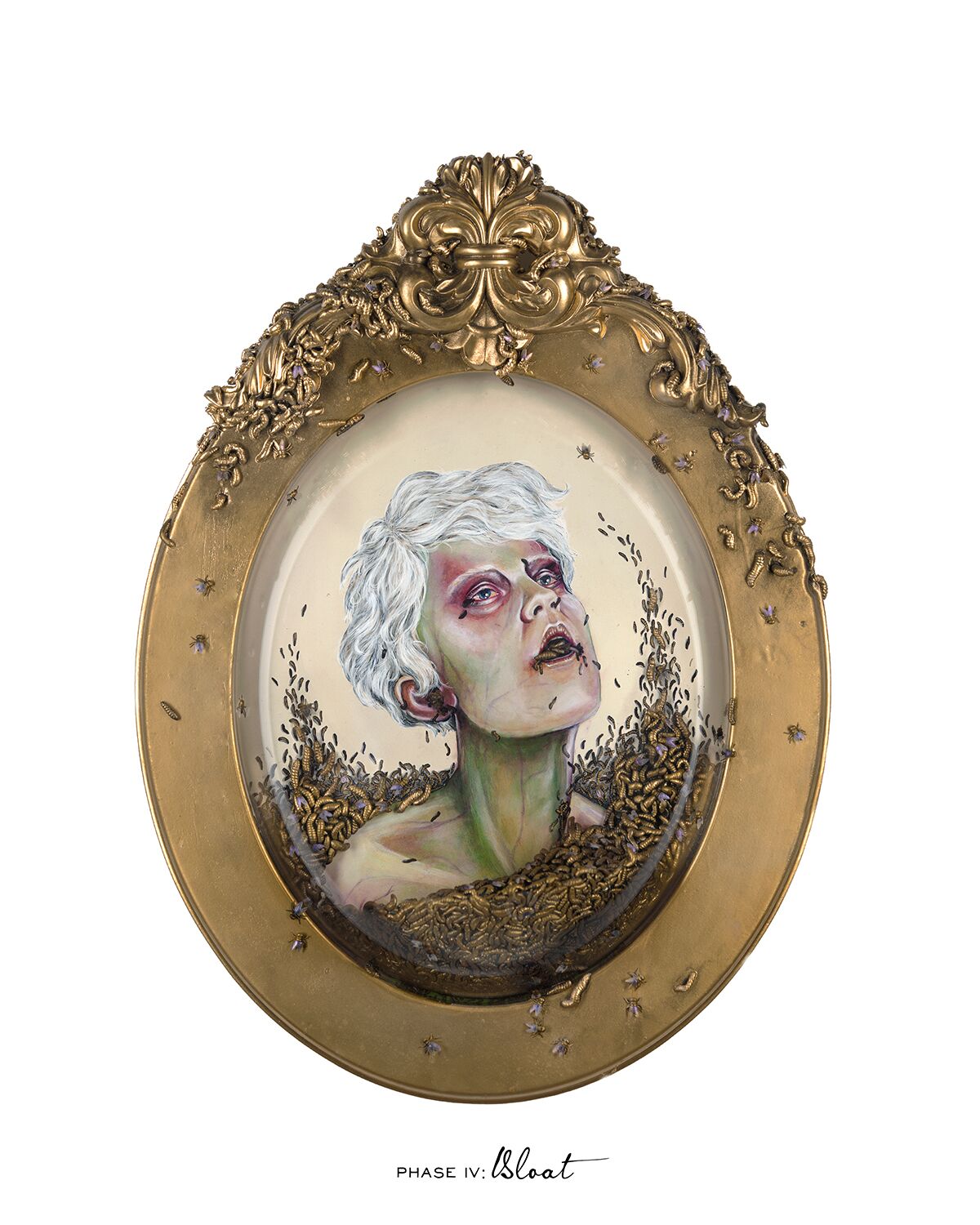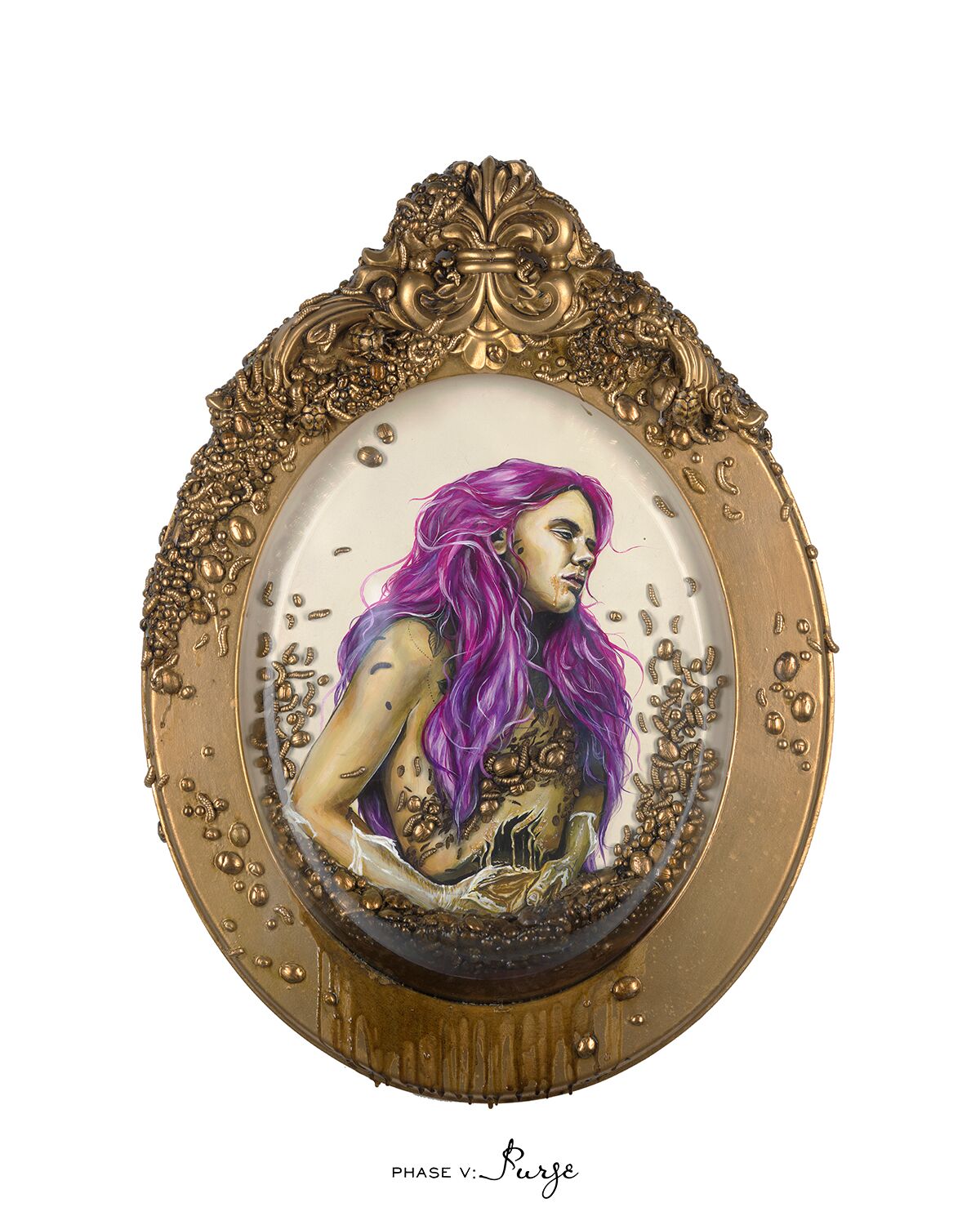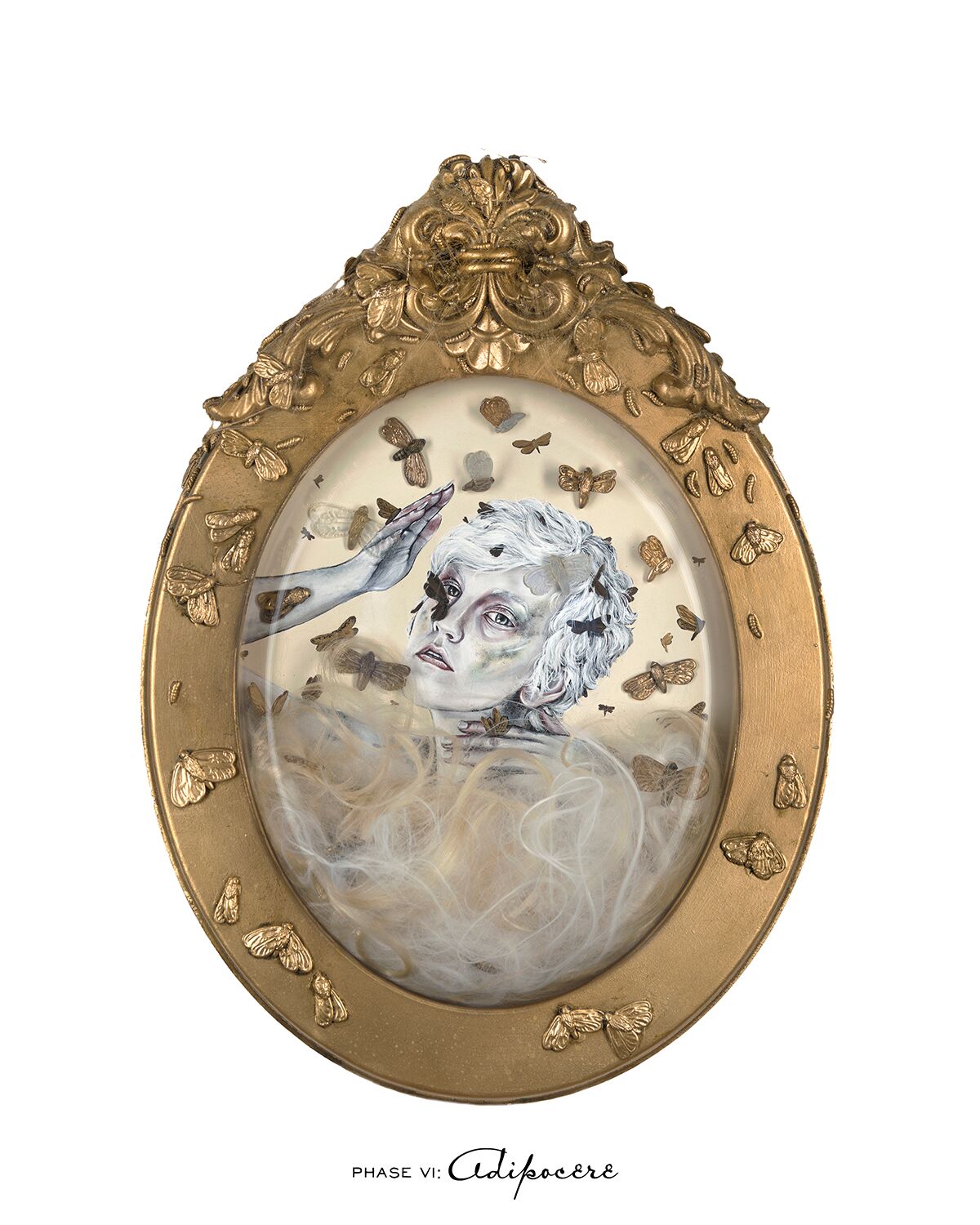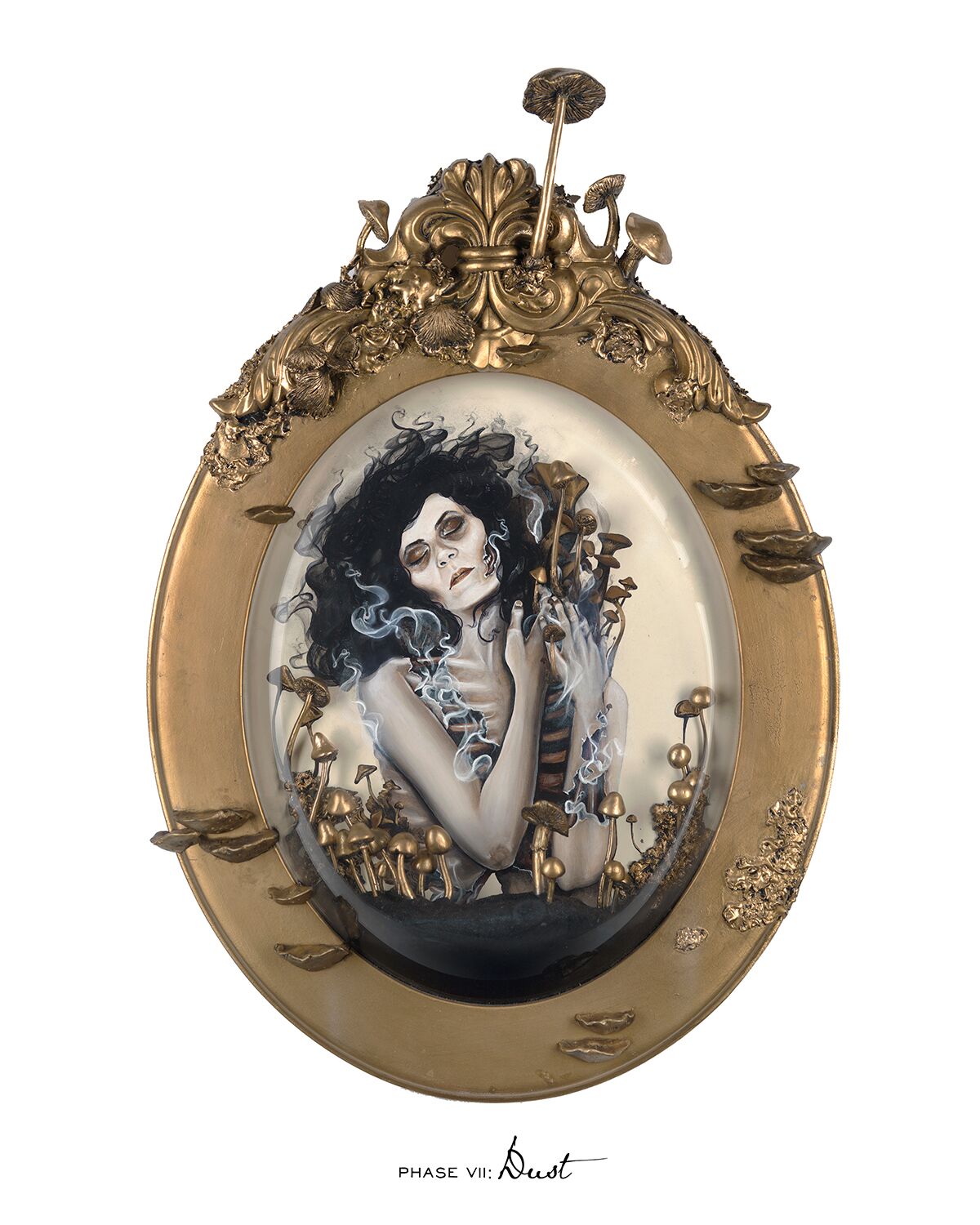The Beginning
I started compulsively studying decomposition because I was a death-phobic 20-year old who’d recently lost my religion. I had also just experienced the unexpected death of my cat, which triggered an equally unexpected existential crisis. I was desperate to find a way to understand and respect, if not accept, my impermanence.
It was early one morning, after many months of death research that I had a vision of a decomposing woman with golden maggots pouring from her mouth, and envisioned a series that honored the process of decomposition and all the ways that nature reclaims us.
The result became The Reclamation; a series of seven (the biblical number of completion). Each figure is a personification of a phase of decay, and the series together is akin to a decomposition mythology. Over the course of 2.5 years, I was fortunate to be supported by a team of Kickstarter backers, collaborators, friends, family and followers. Now, almost three years later, The Reclamation is here, but not without both obstacles and rewards.
Rewards and Sacrifices
It began when I approached my husband, Daniel, and said, “I want to spend a lot of time making art about decomposing human bodies… but don’t worry – it will be pretty, not gross.” It was a surprisingly easy sell given Daniel’s understanding of creative compulsion.
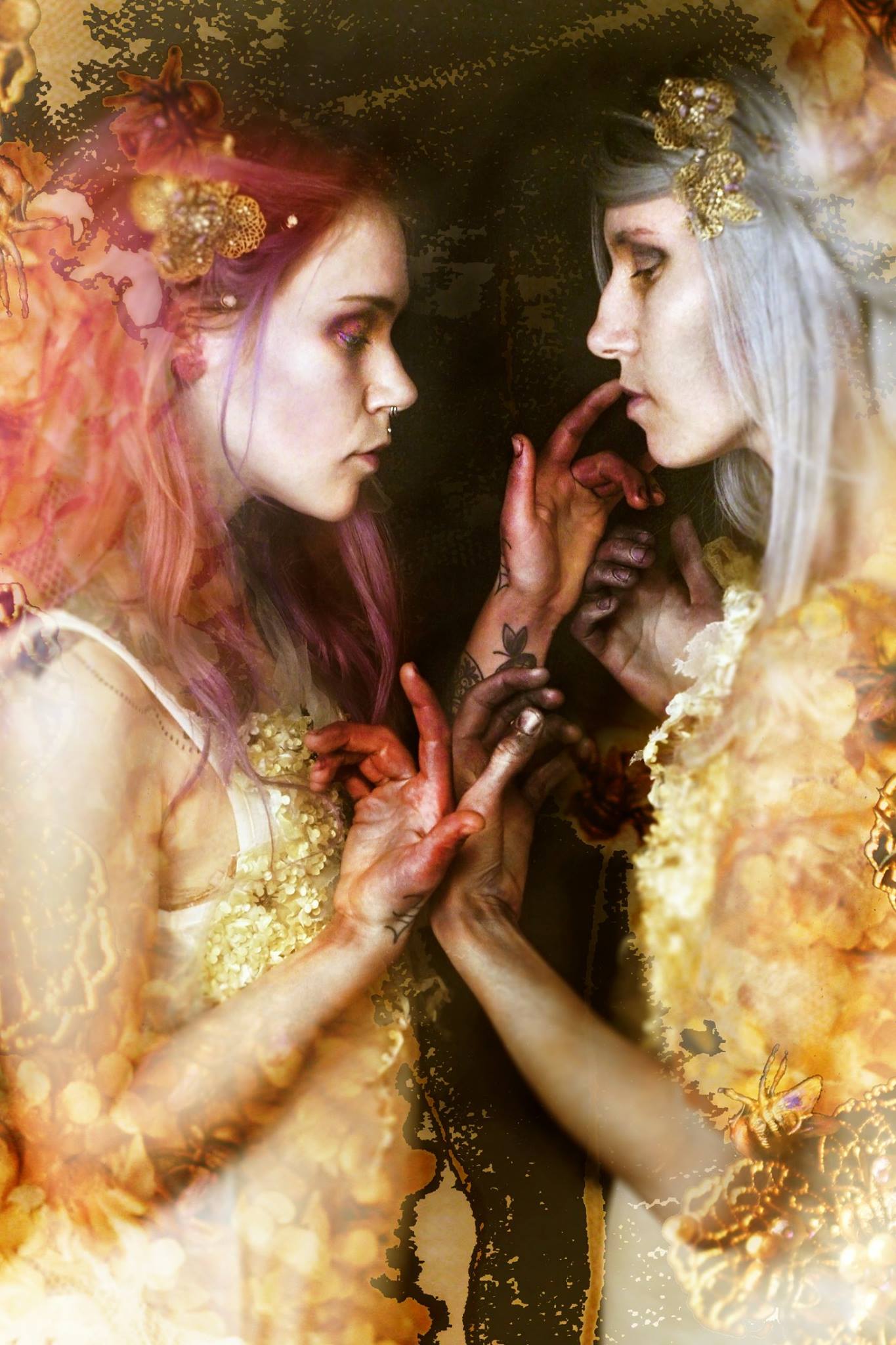 I was keenly aware that The Reclamationwas an ambitious project, and that I’d need a lot of support, time, funds and help. So, we sat together as partners and created a plan to make it happen. During the lifetime of the project, that included everything from me working less at my day job, to Daniel kindly listening to me wax poetic about my forensic science research, and at times, relinquishing large portions of our house in the name of Art. But we didn’t have the resources on our own to bring the project to fruition.
I was keenly aware that The Reclamationwas an ambitious project, and that I’d need a lot of support, time, funds and help. So, we sat together as partners and created a plan to make it happen. During the lifetime of the project, that included everything from me working less at my day job, to Daniel kindly listening to me wax poetic about my forensic science research, and at times, relinquishing large portions of our house in the name of Art. But we didn’t have the resources on our own to bring the project to fruition.
Looking at the basic material costs of bringing The Reclamationto life, I realized I’d need about $2000 – about double the amount I would be able to save. With the prompting of a friend, I decided to Kickstart the project. It was intimidating. I had less than 200 Instagram followers at the time, and most people I talked to didn’t really understand why I would want to do a project about decomposition.
Despite immense gratitude to my eleven backers, I’m not sure that I would crowdfund again. It’s a massive responsibility to try to do justice to the faith of others, and my anxious brain being what it is, feeling responsible to backers brought the benefit of accountability, but also the burden of guilt to the project. Due to unforeseen life changes, as well as the common challenges of projects, The Reclamation ended up taking three times as long to complete and about twice as much funding as I’d originally anticipated. It is also important to note that Daniel and I live debt-free. The Reclamation and my businesses have been built in the black. This is an important value for us, but it also means that my ability to progress has always been determined by funds.
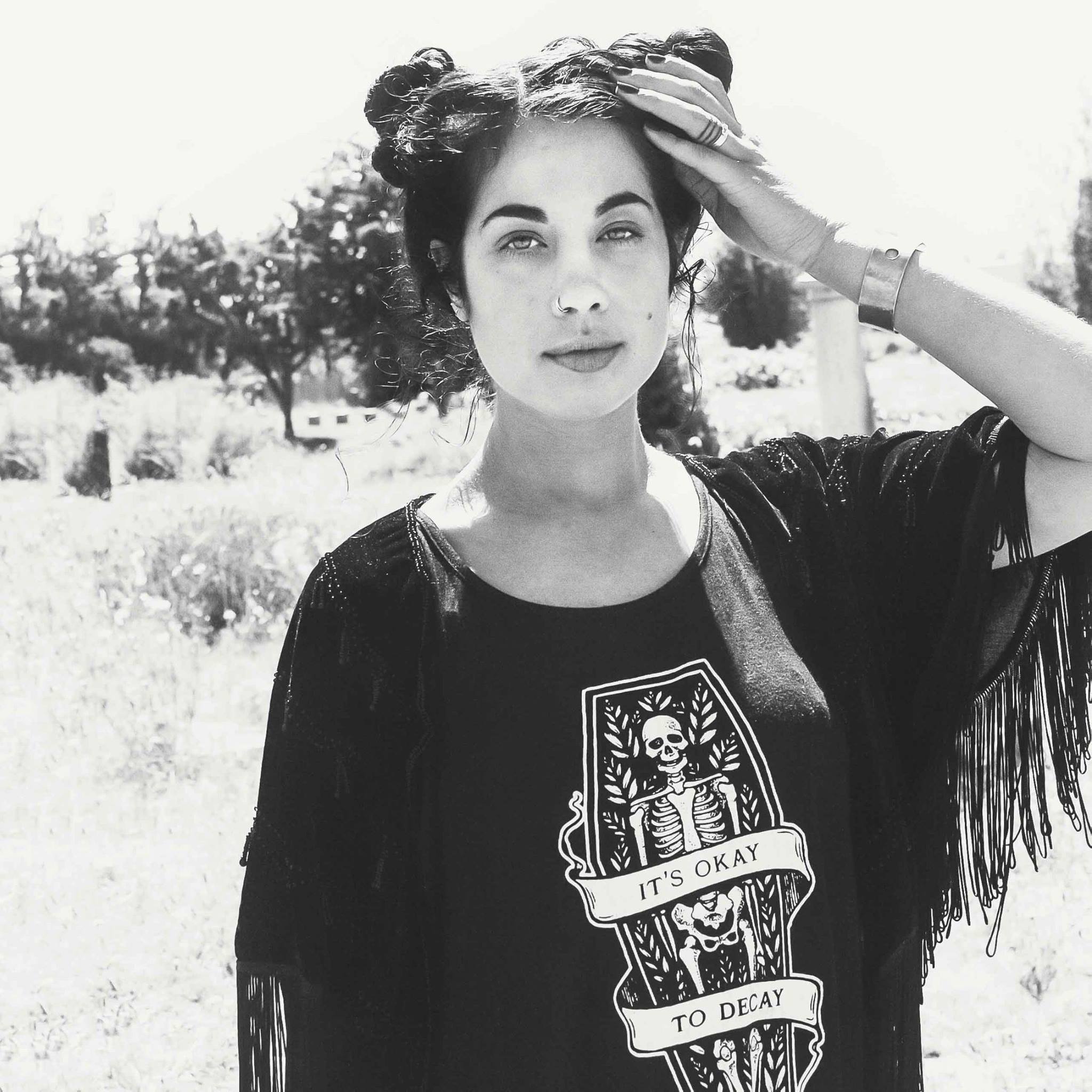
Creative Funding
During this process I began creating shirts and other death positive merchandise, in part to generate further funding of The Reclamation. The structure of this new store allowed me to earn funds in a way that was more suited to my nature than crowdfunding, however, learning how to run a business took a lot of time away from the project.
The surprise success of my “It’s Okay To Decay” design meant that I ended up raising two creative brainchildren at once. The juggle, and at times struggle, was real but the community that grew around The Reclamation and my business was humbling, fortifying and inspiring.
As I write this, and look back on the nearly three years since I first conjured up The Reclamation, that word ‘community’ stands out. During this time I met and assembled a team of five inspiring and beautiful women who brought their own stories and spirit to each painting as we shot reference imagery in my tiny basement studio. I bribed coworkers with cookies to help me cut my frames and panels on the CNC machine, and my husband continued to support me by assisting me with my math and carpentry. Hundreds of people purchased shirts and stickers and art from my store that helped fund purchases of paint and brushes and so. much. glue.
When I began work on The Reclamation, I had never heard of death positivity. Now, as it draws to a close with a gallery show at Ghost Gallery in Seattle in March, I am working part-time as an artist and run own my own death positive, eco-conscious business, KALMA, which launched on January 1st. The Reclamation has even inspired a line of vegan eye shadows called The Decomposition Collection, a collaboration I worked on with Detrivore Cosmetics.
Community and Finding Your Calling
At the beginning of this process I wouldn’t have thought myself capable of these achievements, but I’m grateful to have been surrounded by people who did and do.
Reaching these goals has taken an average of 30-40 unpaid hours of work a week for three years; which can be exhausting and discouraging even when you’re doing what you love. When you embark on these passion projects and adventures of ambition, know that it will be hard, it will require grit and sacrifice, and that you’ll need people to support and center you along the way.
In those moments when I’m worn out or discouraged, it’s the sense of purpose that death positivity brings me that carries me forward. If I were still a Christian, I might call death positivity my ‘ministry’ – an outlet that encourages me to pursue knowledge, cultivate discipline, serve others, and use my gifts to reduce net suffering in this world.
Like many others, I initially thought I would do that by becoming a mortician, but that wasn’t to be my path. I couldn’t have planned to be a ‘death positive artist’ but I find myself here by identifying my unique gifts, following my curiosity, and learning to work for myself.
My best work has always come from within me. The Reclamation was one of the first things I ever did solely for myself and by tapping into these personal struggles, something more fundamentally and relatably human came out. When I made the ‘It’s Okay To Decay’ design, I created it as the ‘death positive t-shirt I always wanted but didn’t yet exist’ and it’s a best seller. When I tried to force myself to make more and more designs, people didn’t connect with them – as they were born of pressure and not inspiration. What is it you wish you understood, or existed in this world, or what service do you wish you’d had in your moment of struggle? Work on bringing those things to fruition and that is where you will find your path.
As we all look for our place in this growing death positive movement, we must be sensitive to the places where we begin to steal one another’s sunshine. Consider whether your death positive business idea is unique or unseen in your area, or whether you can be one of the equally important and necessary people who throws the whole of their effort behind someone else’s related business or activism. Look for the ways you can weave death positivity into your current life; we don’t just need death positive podcasters and morticians (which we do!) but we also need death positive doctors, and school teachers, and lawyers, and landscapers, and friendly strangers at the coffee shop.
Ultimately, being death positive has nothing to do with your day job, and everything to do with being one more person who’s ready to help, hold space and honor one another as we face the hardest parts of being human, together.
Introducing: The Reclamation
PHASE I: Death
So you’re dead, and let’s say you’re lucky enough to have a Good Death – what happens to what used to be you?
Well, once your heart stops, pallor mortis, or paleness, begins to set in. Your blood slowly succumbs to gravity, drawn towards the lowest portions of your body and away from the surface where it used to give a lively blush. Within 15-20 minutes your body begins to cool in a process called algor mortis. Your eyes lose their charming ‘spark’ and are now vacant and glassy.
In my piece ‘Death,’ golden poppies surround the pallid figure; poppies are a traditional offering to the dead in Greco-Roman mythology.
PHASE II: Livor & Rigor
The figure on the left represents livor mortis, (also called blood pooling, lividity or hypostasis). This begins around 15-30 minutes postmortem, but is not clearly observable until 2 hours after death when your body begins to take on a marbled appearance. Soon the highest areas of your body will be pale, while the lowest areas become a deep purple.
The figure on the right represents rigor mortis, which begins around 4 hours postmortem and peaks around 13 hours postmortem. The lack of oxygen in your body causes a chemical reaction that contracts the muscles. This process lasts for around 2-3 days.
In ‘Livor & Rigor,’ the “Mortis Sisters,” as I’ve nicknamed them, are covered in iridescent blowflies looking for a good site to lay their eggs. Depending on conditions of your body and environment you died in, blowflies can arrive and lay eggs on you as soon as the first 24 hours postmortem.
PHASE III: Putrefaction
Chemical changes in the body cause your cell walls to weaken, releasing enzymes and triggering the beginning of autolysis (you digest yourself!) Your body’s existing microflora proliferate, consuming your carbohydrates, lipids and proteins. The microflora takeover marks the beginning of putrefaction. Externally, this causes your body to discolor even further.
Blowflies and flesh flies continue to lay eggs, as the very first eggs laid begin to hatch and feed on your soft tissues. One of my favorite things I learned during my research was how observing larval populations can help forensics teams estimate time of death!
PHASE IV: Bloat
Your microflora produce gases which build up inside of your body. As your tissues swell, the abdomen distends and the pressure causes fluids to leak from … orifices.
Red blood cells leak into your decomposing body, where they are transformed into sulph-haemoglobin and give your skin a distinctive green color.
Maggots thrive on your body, growing in size and number as they feed. The masses of maggots constantly churn as each maggot seeks the center for food and then the outside for cool air. If they don’t reach the surface, the combined heat of their bodies will cook the central maggots to death.
A source of inspiration for this piece was Lara Jensen’s avant garde jewelry collection ‘Vanitas’. Her work plays with both the grotesque and decadent in a way I find very admirable.
PHASE V: Purge
The pressure inside your body reaches it’s breaking point, forcing your abdomen to burst open and purge your liquified insides. Like a deflated ballon that’s gone all wrinkly, your skin is too loose and begins to slip off in sheets.
Once your body has purged, it can make the soil so nutrient-rich that it kills the surrounding plant life – a particularly macabre version of “killing with kindness.” This area of plant death is called a cadaver decomposition island.
Your soft tissues nourish maggots and beetles, as other spiders and insects arrive to consume the larvae.
Fun Fact: I spent about six months trying dozens of different specialty nail polishes, powders and paints to get the perfect green/gold duo chrome finish on my dermestid beetles. The winning color is Chameleon by Revlon, in case you want to copy the lewk.
PHASE VI: Adipocere
In a body that has been decomposing under normal circumstances, the tissues will begin to dry after the purge and decomposition will slow. If the body is exposed, tineid moths will lay larvae that will in turn consume the hair off the corpse.
For a body that has been in a damp and anaerobic environment, adipocere, or grave wax, can form. The fats in the body undergo a process called saponification and the result is a firm cast of the sufficiently fatty tissues. Sometimes, vivianite, a vivid blue mineral, will crystalize on the surface of a body from a reaction of moisture, iron and phosphate.
In ‘Adipocere’, I took the most creative license and employed some fantasy in my depiction. Moths would not be able to access a body that is the right environment for adipocere formation, (though the two events would occur at a similar place on the timeline).
PHASE VII: Dust
With time, and exposure to elements and scavengers, a body will become nothing more than dust and bones. If conditions are sufficiently arid, there may be some desiccated and naturally mummified tissues.
Mushrooms may grow where a body once lay, rebalancing the nutrients in the soil and preparing it for the plant life to come. It’s important to note that most mushrooms don’t really grow *on* bodies. That’s a myth primarily perpetuated by artwork. Mushrooms much prefer to grow on dead plant life and waste than carcasses.
THE END
When I embarked on this project, I hoped to 1) learn about my death, 2) normalize the parts that were scary to me, and 3) create a tool for talking about death. I feel confident and proud to say that I accomplished all 3 of those things. The funny thing is, that while The Reclamation has made me less afraid of death, it doesn’t make me less afraid of dying…and I think that’s okay.
You can find AJ Hawkins on Instagram | Facebook | AJ Hawkins Art | Kalma

